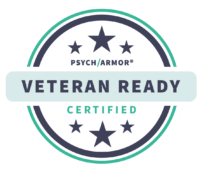Outpatient vs. Residential Treatment: What Will Help You Right Now?
Maybe people who are concerned about you have mentioned something about your drug and alcohol use. Or perhaps you’re aware of certain signs and symptoms of addiction and realize it’s time for help. Taking the first step is understandably daunting, and there are numerous factors to consider. Here are some tips to evaluate outpatient vs. residential treatment, and which is the best course of action right now.
The Need for Treatment
In November 2023, the Substance Abuse and Mental Health Services Administration (SAMHSA) released the results of its annual report, The National Survey on Drug Use and Health. Here are some of the findings with civilian populations, which we include verbatim:
- More than 1 in 6 people—nearly 50 million Americans—aged 12 or older had a substance use disorder (SUD) or alcohol use disorder (AUD) in the past year. Of those, about 1 in 5 had a severe disorder, about 1 in 5 had a moderate disorder, and more than half had a mild disorder.
- Roughly 27 million people had a drug use disorder
- Nearly 30 million people had an alcohol use disorder
- About 6 million individuals had an opioid use disorder
- Additionally, 1 in 12 adults over 18 had some form of mental health disorder as well as SUD or AUD.
- Approximately 1 in 20 people aged 18 or older had serious thoughts of suicide in the past year. Nearly 4 million adults made suicide plans, and more than 1.5 million attempted suicide.
- However, the suicide rates for adolescents are more dire: 1 in 8 teens under 17 experienced serious thoughts of suicide, 1.7 million made suicide plans, and nearly 1 million attempted suicide in the past year.
Unfortunately, SAMHSA also reports that approximately 90 percent of people didn’t receive any treatment. While there are many reasons for this, the survey indicated that, primarily, “nearly all people with a substance use disorder who didn’t get treatment at a specialty facility didn’t think they needed treatment.”
Understanding Outpatient Treatment
Studies show that intensive outpatient programs (IOPs) are highly effective for many people seeking treatment for SUD and AUD. One primary reason is that they’re usually structured in the same way as inpatient, or residential, rehabilitation programs with similar components, such as:
- Comprehensive assessments
- Partial care/partial hospitalization
- Access to group and individual therapies, peer support programs, and other mutual aid communities
- Individual counseling for co-occurring mental health, SUD, and AUD issues
- Distinct IOP services for clients enrolled in medication-assisted treatment, if necessary
- Traditional aftercare
Advantages of outpatient treatment include:
- Outpatient therapy ranges from two to six months, depending on your needs.
- It occurs multiple times per week for a few hours. This time is used for group meetings and individualized counseling.
- An IOP can be scheduled around work, child care, and other daily responsibilities.
- It’s less expensive than inpatient care.
- Groups are small, often not exceeding more than 10 people.
- There’s not a transition from a long-term residential stay to back home.
Possible disadvantages to outpatient treatment:
- Depending on the IOP, there might be less support for medically supervised detoxification.
- A good home support system is critical to help manage withdrawal and other emotional ups and downs. Some people don’t have access to this essential structure.
- Individuals in an outpatient program still have to face triggers common in early recovery.
Understanding Residential Treatment
Inpatient or residential addiction treatment is a more comprehensive solution, with many people choosing a program that lasts 30, 60, or 90 days.
Advantages of residential treatment include:
- Residential care provides medically safe detoxification.
- There’s 24-hour care and supervision.
- Each day is highly structured, which helps create a more stable foundation.
- There are meetings, groups, and counseling sessions going on all day, providing an intensive program of treatment.
- Staying in an inpatient facility helps people resist outside influences and triggers.
- Most rehab centers offer numerous holistic therapy options, such as yoga, music and art therapy, exercise and nutrition programs, and more.
Potential disadvantages of residential treatment:
- Leaving your place of employment for an extended period of time.
- Limited outside contact and being away from family and friends.
- Inpatient care is more expensive than outpatient treatment.
- Transitioning back home can be difficult.
Seabrook Can Help
What will help you right now? Whether you decide on an outpatient program or feel inpatient care is best, Seabrook offers four award-winning addiction treatment centers in New Jersey to accommodate you. Our residential and outpatient facilities offer a legacy of more than 40 years of service, with compassionate, clinically proven care, multidisciplinary treatment teams, programs rooted in the philosophy of the 12-Steps, and more. Learn why the evidence-based Seabrook Model sets you up for long-lasting wellness.




